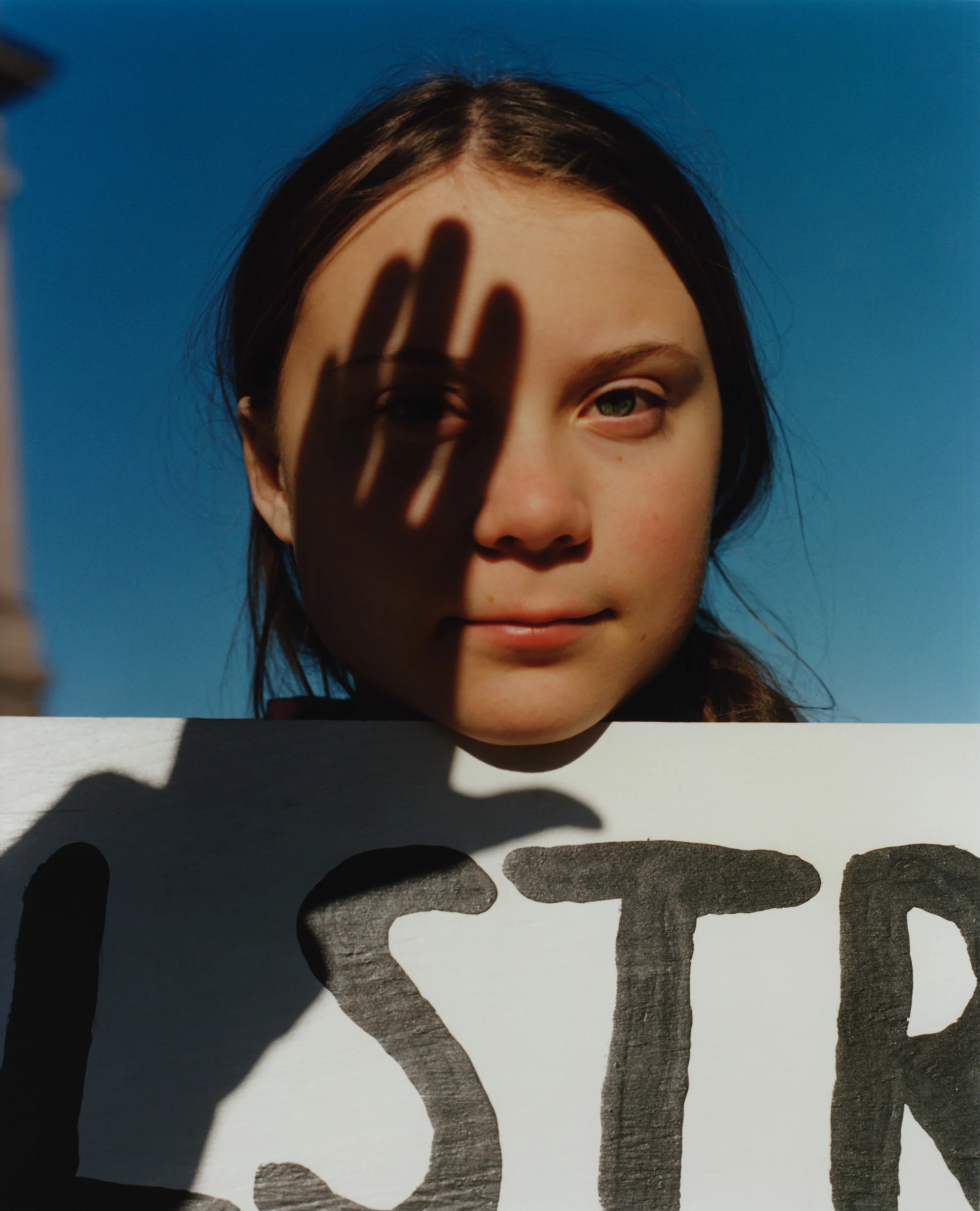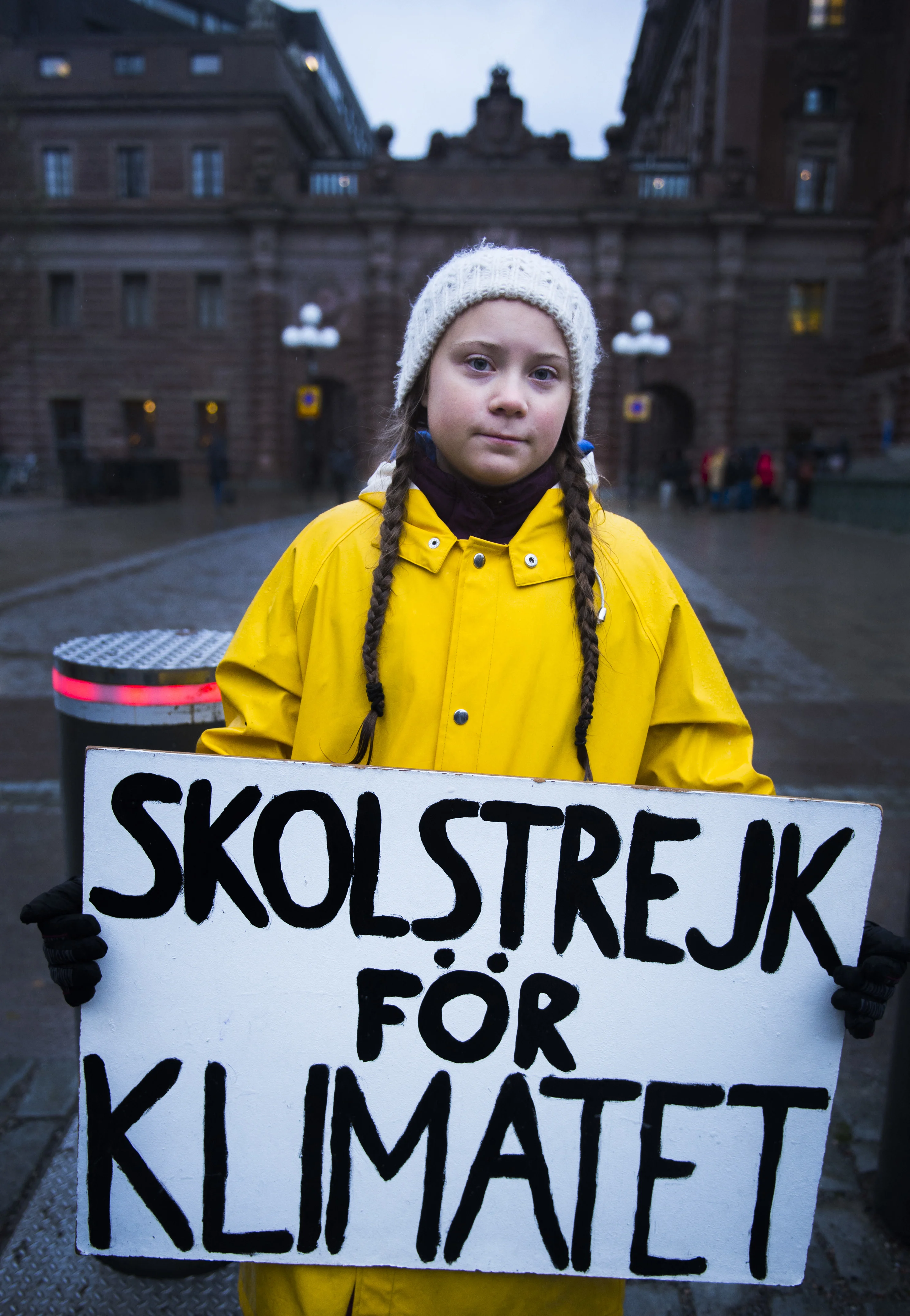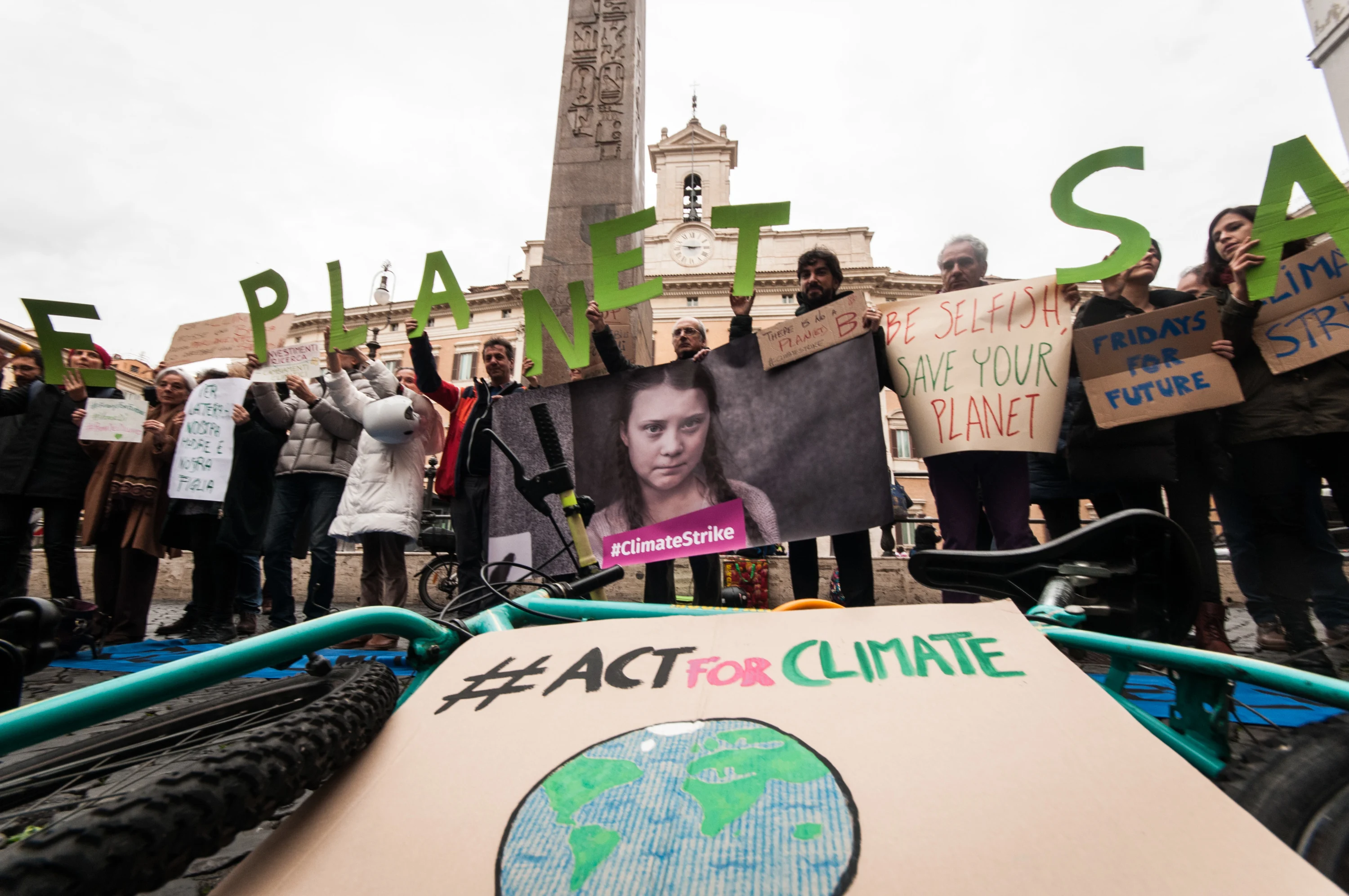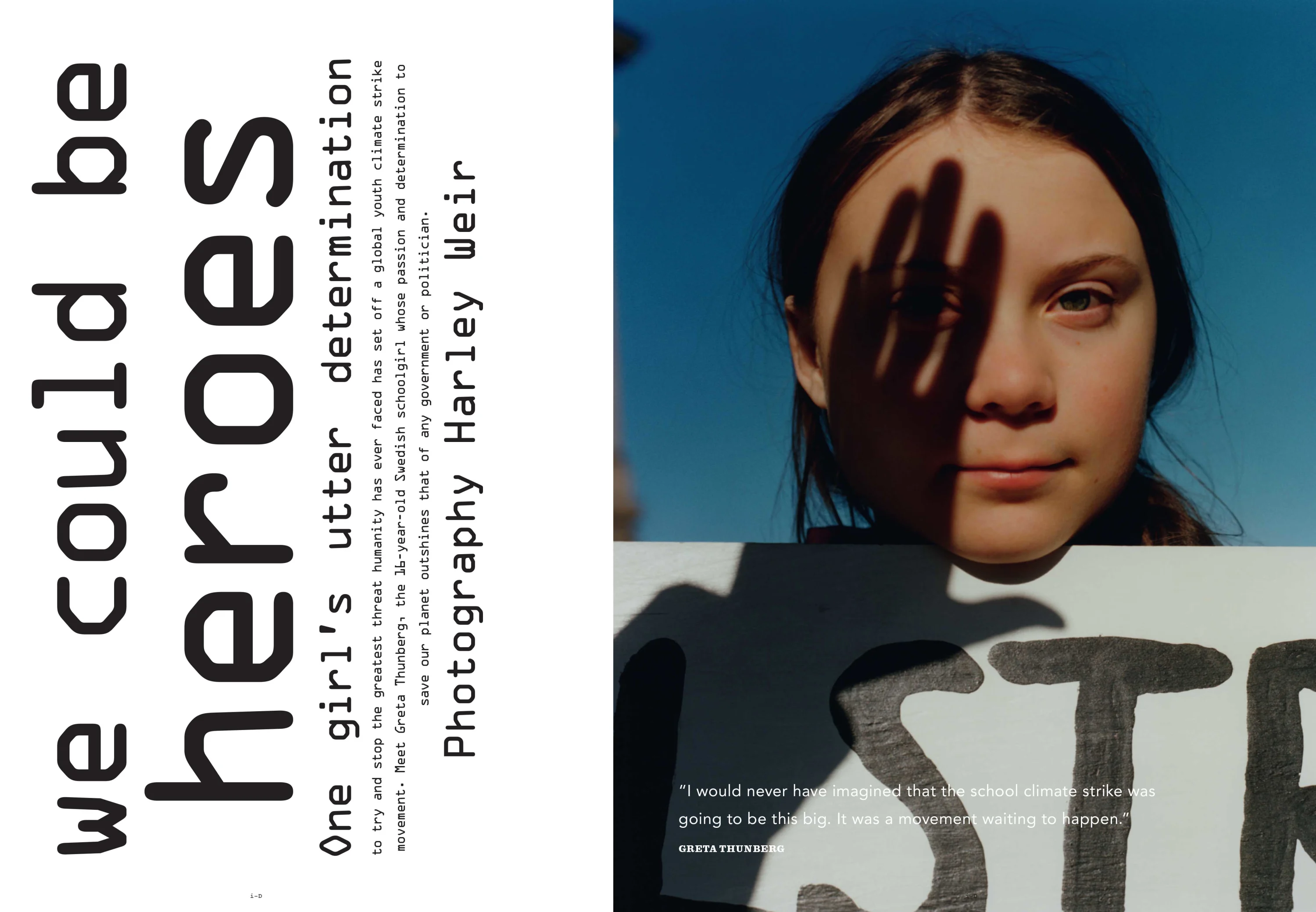

It is predicted that around 1.5 trillion images will be taken in 2021. It's safe to assume that, out of those, only a handful will become future classics. With this in mind, More Than Meets the Eye is a series by Ryan White and Douglas Greenwood that dissects the most talked-about photographs of the last decade, questioning the composition, cultural context and the behind-the-scenes stories that make the image so remarkable, shareable, memorable and a cut above the rest. First up? Greta Thunberg photographed by Harley Weir for i-D.
Header image design by Pat King

Context
In August 2018, Greta Thunberg – then a relatively unknown Swedish 15-year-old – began protesting outside Stockholm’s parliament building with a sign that read “Skolstrejk för klimatet” (“School strike for climate”). In the months that followed, Greta’s “Fridays for Future” demonstrations galvanized an unprecedented global youth movement.

By Earth Day, 22 April 2019, enthusiasm around the teenage climate activist was at fever pitch. Serendipitously, that day, the fashion magazine i-D announced their Voice of a Generation issue. On the cover was Greta. It would be her very first.
It felt like the biggest youth uprising of our times and it was beyond urgent.
As a publication, i-D has captured contemporary youth culture through a fashion lens in the 41 years since its inception. Under the guidance of Holly Shackleton, for whom this was her final issue after six years as Global editor-in-chief, the magazine focused playfulness and pop culture as well as luxury fashion, tapping into the more tongue-in-cheek framing its founders Terry and Tricia Jones had imbued it with when i-D launched in 1980. It has also been one of the few magazines of its ilk that consistently engaged with socio-political movements and activism within the fashion space. “It felt like the biggest youth uprising of our times and it was beyond urgent,” Holly Shackleton says of publishing that particular issue alongside the climate crisis movement. “As Editor-in-Chief I always wanted to focus i-D around the idea of ‘a voice of a generation’ and at that exact moment in time, Greta was that voice.”

Creation
The most striking image in this story, arguably, is the one featured here: that of Greta with the shadow of a hand across the right side of her face. It was one of several from Greta’s cover shoot for i-D; a collaboration between photographer Harley Weir, Holly Shackleton as Editor-in-Chief and the magazine’s current editorial director Clementine De Pressigny, who pitched the idea of Greta as a cover star in the first place.
Harley Weir – better known for her fashion campaigns with brands like Balenciaga and CELINE – was an unexpected, though not unusual choice as a photographer. Look beyond the surface of her work and it often feels as though she’s never felt entirely comfortable with the decadence of the fashion industry, nor the ephemeral nature of the products it sells. For Stella McCartney’s AW 2017 campaign, for example, she shot models in designer clothes draped across a Scottish landfill site. In 2018, she presented an exhibition comprising pictures of colorful plastic waste titled Rubbish _1, part of an ongoing project that has captured the vast impact of human consumption on the planet. The subjects of her personal work have felt prescient. “It had to be a photographer who really cared about what Greta was doing,” Clem De Pressigny says.
I had 30 minutes to interview her, and Harley had 30 minutes to shoot her.
On the day, the shoot was completed within an unusually tight time frame. “I had very little time to organize it,” Clem adds. “We had a small window before Greta would be busy and were only given a small amount of time with her on the day, because her family didn’t want to expose her to too much. I had 30 minutes to interview her, and Harley had 30 minutes to shoot her. Usually a cover shoot would take hours, and the interview would also be much longer. But this felt too important to pass up.”
The day itself, Clem recalls, was chaotic. Greta’s profile, both in Sweden and globally, had skyrocketed, and so the protest (and thus, the shoot) was attended by press with long-lens cameras. “ were getting in the way while Harley was shooting, and were pretty invasive. But Greta was calm and composed. She was brilliant. Focused, eloquent, insistent. And the local kids who were there in support of her were so passionate about striking, and were creating their own community.”
Composition
As is customary for any i-D cover (or cover attempt, some of which still make it inside the magazine), the right eye is always shut. This is a nod to its logo, a horizontal winking face, a legacy that extends all the way back to the first issue in 1980. Greta, Clem says, was a “good sport” in getting the shot, trying out a number of Harley’s suggestions.

But oftentimes this simple conceit allows for more than just playful wink. In this image, the shadow of these fingers (Harley’s, to be exact), cast longer and spindly by the sun that burns bright above them, perfectly convey the tension between young and old, activist and establishment.
This is contemporary youth culture. Times are changing, and you’d better keep up.
Harley’s image captures the rare determination and gut of someone like Greta, but in doing so doesn’t try to override her experience as a schoolgirl. Beneath the hand that casts a harsh shadow across half of her face is a gaze that suggests both empathy and strength. Her chin rests on a placard usually carried by people a decade or more her senior, a marker of how mighty Greta’s intentions are with her activism. In this image, and the others from Harley’s shoot, Greta is never viewed through a lens of celebrity, nor is this treated as a standard magazine cover: the stray hairs carried by the Stockholm wind aren’t removed in post. What you see in a space usually reserved for fantasy is an image of a real young person determined to make palpable change – truly now or never.
Impact
In the age of social media, it’s tricky for a magazine cover story to communicate something we might not already know, or tap into a conversation right at its inception. And while these images of Greta may not have offered the world an unknown story, they did convey something that hadn’t yet fully been said: this is contemporary youth culture. Times are changing, and you’d better keep up.

The cover, and image presented above, which appeared inside the magazine and later as the cover of a limited edition i-D zine, punctuated a shift in the way non-traditional news outlets began to discuss the climate crisis.
In the months that followed, Greta fronted a handful of prestigious print titles: TIME, Rolling Stone, British Vogue and GQ to name a few. Many of these images sought to mythologize her story, but Harley’s – complete with Greta’s ubiquitous sign, a badge that reads “Save Our Climate,” and a bright blue Swedish sky – prevail as the least distracted. Simple, elegant and spontaneous. A moment of quiet amidst a fervent moment in history. There were no forced narratives or deitizing of Greta Thunberg – a person who, without media hysteria, remains the passionate Swedish teen Harley Weir captured that day in 2018.



